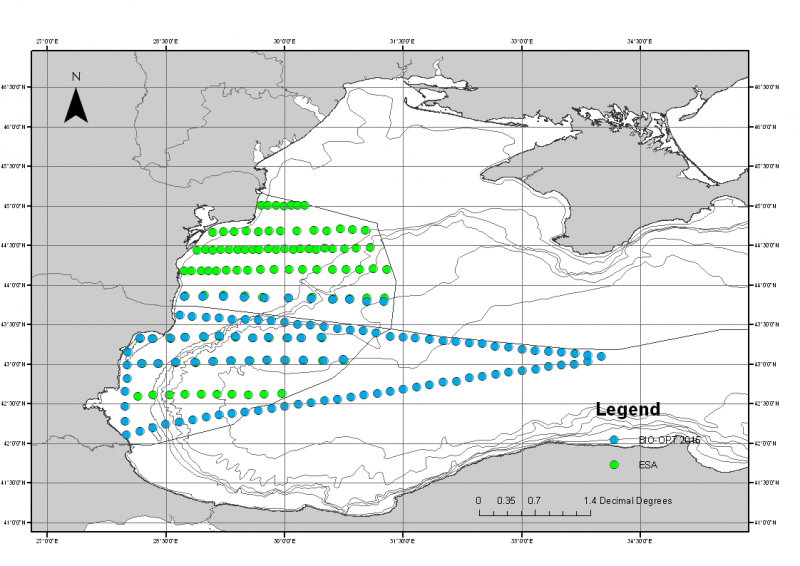Sentinel-3 data to allow closer look at Black Sea environmental state

A major oceanographic campaign led by the JRC is underway in the Black Sea. It will allow scientists to thoroughly examine the biological and optical features of a marine region of utmost political and economic importance that is highly influenced by the inflow of the Danube river.
The campaign supports the validation of satellite data provided by Sentinel-3, launched last February within the EU earth observation programme Copernicus. It is carried out in central and western Black Sea in cooperation with research institutes from the UK, Romania, Bulgaria, Estonia, Greece and Turkey.
The researchers will work to produce in situ validation data covering a number of areas within the Black Sea, to be compared with satellite data from Sentinel-3. Satellite data refer to water-leaving radiance – resulting from the interaction of sunlight with optically-significant constituents suspended or dissolved in seawater. As a consequence, water-leaving radiance allows information to be obtained on the biological activity happening below, through the optical properties of the water body.
The comprehensive data collected through seawater sampling will be essential to improve regional models and algorithms for the quantification of the concentration of optically significant constituents in seawater through satellite observations – mostly phytoplankton chlorophyll a, non-living particles, and dissolved coloured organic matter.
Research work on the comparison of optical-biological sampling and analysis methods among European teams could reduce measurements uncertainties and achieve standardisation of measurement protocols. The participation of young scientists and students provides a valuable hands-on training to future experts.
In addition to satellite validation activities, phytoplankton and zooplankton sampling will help to consolidate know-how on the spatial distribution of alien species in the Western Black Sea. The Danube delta region is a recognised hot spot for alien species and thus considered of extreme importance for research work in support of environmental EU policies. Preliminary results from sample analysis confirm the presence of recently recorded copepods Oithona davisae and Acartia tonsa, and additionally of ctenophore Mnemiopsis leidyi.
These results will be relevant to further assess trends and shifts of the Black Sea pelagic ecosystem. They will also support the implementation of EU legislation (Regulation (EU) No 1143/2014) on the prevention and management of the introduction and spread of invasive alien species. The findings will help the development of indicators for good environmental status related to Descriptor 2 (non-indigenous species) for the Black Sea Region according to the Marine Strategy Framework Directive, which refers to more effective protection of Europe's marine environment.
The oceanographic campaign was planned in two legs on board the Akademik Research Vessel of the Bulgarian Academy of Sciences. The first leg, with ship-time supported through the EU-funded Eurofleets 2 programme and involving JRC, Turkish, Greek, Bulgarian and Romanian scientists, took place between 2 and 11 June, focusing on the exploration of Bulgarian and Turkish waters. The second leg, with ship-time funded by the European Space Agency (ESA) and involving JRC, Greek, Bulgarian, Romanian, Estonian and British scientists, is mostly restricted to the Romanian Danube region and takes place from 12 to 24 June.
Provided by European Commission, Joint Research Centre (JRC)


















